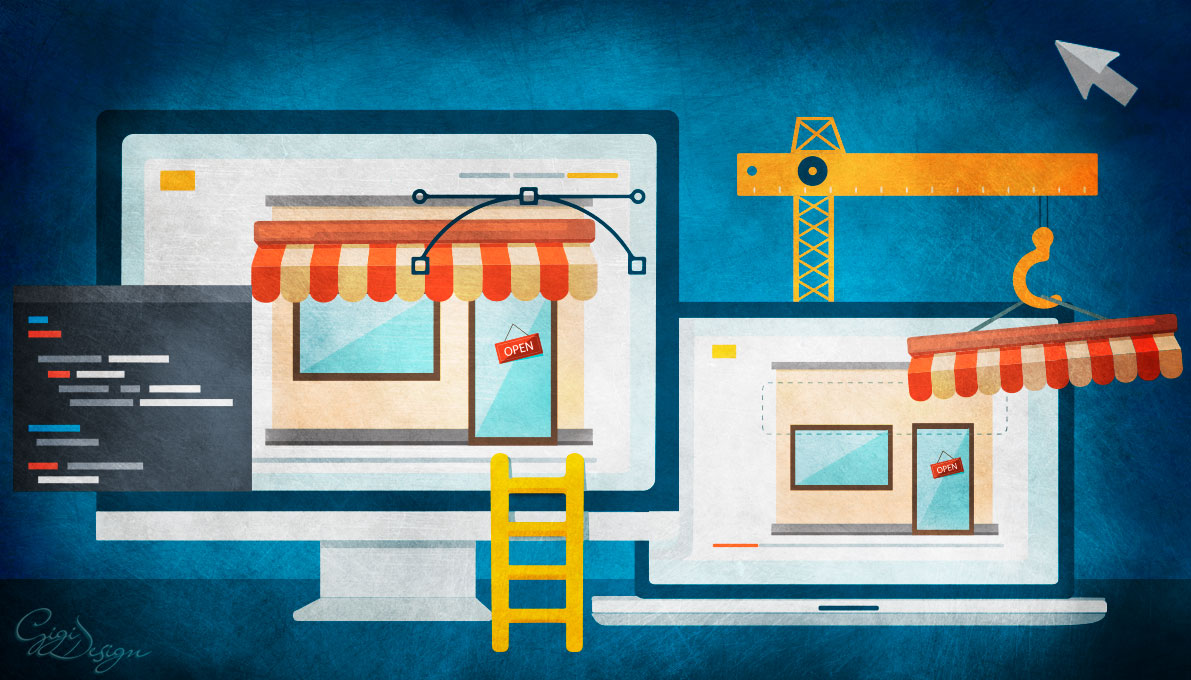E-commerce design in Mexico is essential for businesses to position themselves and grow in the dynamic digital market. With the transformation of consumer habits and the increasing use of the internet, having a professional, well-designed online store is now key to attracting customers, boosting sales, and enhancing the shopping experience. This guide is based on verified data and facts, offering a comprehensive analysis and practical strategies for achieving effective e-commerce design in Mexico.
For more information and specialized advice, visit E-commerce design in Mexico.
Introduction: The Growth of E-commerce in Mexico
In recent years, e-commerce has experienced remarkable growth in Mexico. According to recent studies, the Mexican digital market is projected to reach sales figures in the billions of dollars in the coming years. This expansion is driven by several factors:
- Increased Internet Usage: Over 70% of the Mexican population has internet access, enabling businesses to reach millions of consumers.
- Shifts in Purchasing Habits: Consumers increasingly prefer online shopping for its convenience and the ease of comparing products.
- Innovations in Digital Payments: The integration of secure, fast payment systems—such as credit cards, PayPal, and local platforms—has streamlined electronic transactions.
E-commerce design in Mexico encompasses not only the visual appearance of a website but also its functionality, security, user experience, and search engine optimization. A well-designed online store can significantly increase web traffic, improve Google rankings, and boost conversion rates.
What is E-commerce Design?
E-commerce design refers to the process of creating and developing websites or online stores that are visually appealing, user-friendly, and functional. This process includes:
- Planning and Strategy:
Setting clear objectives, identifying the target audience, and defining the site structure. The strategy should address both visual design and technical functionality to ensure an optimal user experience. - Graphic Design and Usability:
Selecting colors, fonts, images, and other visual elements that represent the brand and appeal to consumers. Usability is critical to help users easily find products and complete purchases without complications. - Mobile Optimization:
With over 60% of users browsing via smartphones, a responsive design is essential. This ensures a consistent user experience across all devices. - Payment System Integration:
Incorporating secure, efficient payment solutions is vital for building trust and facilitating transactions. Protecting customer data is a top priority in e-commerce. - SEO and Digital Marketing:
Effective e-commerce design includes search engine optimization (SEO) to rank higher in search results. Proper use of keywords, metadata, and a clear site structure are key to attracting organic traffic.
The Importance of Design in E-commerce
The design of an online store goes beyond aesthetics. A good design directly impacts user experience and business success. Some of the most significant benefits include:
- Improved User Experience:
A well-designed website simplifies navigation, helps customers find what they need quickly, and streamlines the purchasing process. This leads to higher customer satisfaction and lower cart abandonment rates. - Increased Conversions:
Studies show that an intuitive, attractive interface can boost conversions by 20% or more. Clear product presentation, easy payment processes, and fast load times directly influence purchasing decisions. - Strengthened Brand Identity:
A professional, consistent design aligned with the brand builds trust and credibility. Consumers value consistency and quality, which fosters greater brand loyalty. - SEO Optimization:
Site structure, loading speed, and usability affect search engine rankings. Effective e-commerce design improves Google rankings, driving more organic traffic. - Adaptability to Market Trends:
In a constantly evolving digital landscape, online stores must stay updated with the latest design, technology, and consumer behavior trends.

Key Elements of Effective E-commerce Design
To achieve an effective e-commerce design in Mexico, attention must be paid to several fundamental elements:
- Responsive and Adaptive Design:
Ensuring the online store works seamlessly across all devices is essential. A responsive design guarantees an optimal experience whether users visit from a desktop, tablet, or mobile phone. - Intuitive Navigation:
The site structure should enable easy, logical navigation. Clear menus, search filters, and well-defined categories help users quickly find what they need. - Loading Speed:
A fast website is critical for retaining visitors. Optimizing images, reducing file sizes, and using reliable hosting minimize load times. - Visual Quality:
The site’s appearance should reflect the brand identity. This includes using consistent, appealing colors, fonts, and graphic elements tailored to the target audience. - Secure Payment Systems:
Transaction security is a priority. Including trusted, certified payment solutions like credit cards, PayPal, and local methods builds user confidence. - Relevant, Optimized Content:
Product descriptions, images, and videos should be high-quality and SEO-optimized. This enhances search visibility and provides clear information to customers. - Clear Calls to Action (CTAs):
Buttons and CTAs should be visible and encourage action, such as “Buy Now,” “Add to Cart,” or “Request a Quote,” strategically placed throughout the site.
Platforms for E-commerce Design in Mexico
Several platforms simplify the development and design of online stores. Some of the most popular in Mexico include:
- Shopify:
A leading e-commerce platform offering comprehensive solutions for small, medium, and large businesses. Shopify is known for its ease of use, wide range of templates, and integration with multiple payment systems. - WooCommerce:
A WordPress plugin that transforms any website into an online store. WooCommerce is highly customizable, making it ideal for those with an existing WordPress site looking to add e-commerce functionality. - Magento:
Known for its scalability and flexibility, Magento is preferred by large businesses needing full control over design and functionality, though its implementation can be more complex and costly. - PrestaShop and OpenCart:
Additional options offering a strong balance of functionality and cost. These platforms are ideal for SMEs seeking robust solutions without a high initial investment.
The choice of platform depends on factors like business size, budget, desired customization level, and specific company needs. Each option has its strengths and limitations, so it’s important to evaluate which best aligns with your business strategy and goals.
The E-commerce Design Process
The e-commerce design process can be broken into several phases, each critical to achieving a successful outcome:
- Planning and Analysis:
- Market Research: Analyze competitors, identify the target audience, and understand trends in the Mexican market.
- Goal Setting: Define clear objectives, such as increasing web traffic, improving conversion rates, or boosting online sales.
- Conceptual Design and Wireframing:
- Site Sketching: Create drafts and navigation maps to define the site’s structure.
- Wireframes: Design basic layouts for each page to visualize element and functionality placement.
- Visual Design and Development:
- Visual Identity Selection: Choose colors, fonts, images, and other graphic elements that represent the brand.
- Site Development: Code and configure the store on the chosen platform, integrating payment systems, inventory management, and other features.
- Optimization and Testing:
- SEO and Mobile Optimization: Ensure the site follows best practices for optimization and is accessible across all devices.
- Usability Testing: Conduct navigation and functionality tests to identify and fix issues before launch.
- Launch and Monitoring:
- Site Publication: Once testing is complete, launch the site to the public.
- Monitoring and Analysis: Use web analytics tools to assess site performance and make ongoing adjustments.
This structured process ensures the online store is not only visually appealing but also functional, secure, and optimized for success in the digital market.
Tips for Successful E-commerce Design
To create an e-commerce design that stands out in Mexico, consider these data-driven recommendations and best practices:
- Keep It Simple:
A clean design without unnecessary elements enhances user experience. Avoid overloading with information and focus on essentials. - Prioritize User Experience (UX):
Ensure navigation is intuitive and search and purchase processes are straightforward. Ease of finding products and completing transactions is critical. - Optimize Site Speed:
A fast site reduces bounce rates and improves Google rankings. Optimize images, minimize scripts, and use reliable hosting. - Incorporate Clear Calls to Action:
Visible, motivating buttons like “Buy Now,” “Add to Cart,” or “Request a Quote” guide users through the purchase process. - Ensure Mobile Compatibility:
With growing mobile usage, the design must adapt to various screen sizes without losing functionality or visual quality. - Use High-Quality Content:
Product descriptions, images, and videos should be top-notch and SEO-optimized, improving visibility and adding value for users. - Integrate Secure Payment Systems:
Customer trust hinges on transaction security. Use certified payment methods and display security badges prominently. - Conduct A/B Testing:
Experiment with different designs, copy, and visuals to identify what drives the best results. A/B testing enables continuous UX optimization.
Success Stories and Relevant Data in Mexican E-commerce
Numerous examples demonstrate how effective e-commerce design can transform a business. Some success stories in Mexico include:
- Case 1: Online Fashion Store:
A well-known Mexican fashion brand revamped its online store to be more intuitive and appealing. Through a user-focused and SEO-optimized redesign, the company saw a 150% increase in organic traffic and a 70% rise in conversions within the first year. - Case 2: Electronics Platform:
An electronics retailer implemented a responsive design and streamlined checkout process, reducing cart abandonment by 40% and boosting sales by 90%, highlighting the value of user-centric design. - Case 3: SME E-commerce:
A small Mexican business transformed its digital presence by hiring professional e-commerce design services. With an integrated strategy spanning design and digital marketing, online sales grew by 120% in under six months.
These cases reinforce the idea that well-executed e-commerce design is pivotal to a business’s success and growth in the digital landscape.

Common E-commerce Design Mistakes
While e-commerce offers immense potential, certain mistakes can hinder an online store’s performance. Common pitfalls include:
- Overloaded Design:
Too many elements or unnecessary information can confuse users and complicate navigation. - Lack of Mobile Optimization:
Failing to optimize for mobile devices leads to a poor user experience and can deter potential customers. - Complicated Checkout Processes:
A lengthy or complex payment process increases cart abandonment. A fast, smooth checkout experience is essential. - Slow Loading Speed:
A slow site negatively impacts SEO and user satisfaction. Technical optimization is crucial to avoid this issue. - Unoptimized Content for SEO:
Missing relevant keywords and poor content structure hinder search engine visibility.
Avoiding these mistakes and focusing on user-centric design and operational efficiency is key to maximizing an online store’s performance.
Trends in E-commerce Design in Mexico
The digital landscape is constantly evolving, and e-commerce design is no exception. Current and emerging trends in Mexico include:
- Minimalist, Experience-Focused Design:
Online stores are adopting simple designs that ease navigation and reduce distractions. Visual clarity and usability are top priorities. - Artificial Intelligence Integration:
Using chatbots and personalized recommendation systems enhances user interaction and can boost conversions. - Advanced Responsive Design:
With mobile devices’ growing importance, stores are investing in technologies to ensure an optimal experience across all devices. - Social Commerce:
Integrating direct purchasing features on social media platforms enables brands to connect more directly with consumers, streamlining purchases via Instagram and Facebook. - Personalization and Omnichannel Experience:
Design strategies are shifting toward personalization, offering tailored content and recommendations based on user behavior and preferences. Integrating multiple digital channels ensures a unified, satisfying shopping experience.
These trends suggest that the future of e-commerce design in Mexico will be shaped by technological innovation, personalization, and adaptability to evolving consumer demands.
How to Hire Professional E-commerce Design Services in Mexico
For businesses looking to outsource the design and development of their online store, hiring professional services is a strategic choice. When evaluating providers, consider:
- Experience and Portfolio:
Review success stories and past projects. Agencies or consultants with proven experience in the Mexican market can offer solutions tailored to local needs. - Comprehensive Services:
Opt for providers offering end-to-end solutions, including design, development, payment system integration, SEO optimization, and technical support. - Transparency and Communication:
The provider should offer regular updates and maintain clear communication throughout the development process and post-launch. - Costs and ROI:
Assess the cost-benefit ratio. A well-executed e-commerce design investment can yield significant ROI, enhancing sales and customer loyalty. - Support and Maintenance:
Ensure the provider offers ongoing maintenance and technical support to keep the site updated and secure.
Hiring experts in e-commerce design in Mexico is crucial to ensure a project is executed professionally and meets business objectives.
Conclusion
E-commerce design in Mexico is a vital investment for businesses aiming to compete and thrive in the digital market. A well-designed website not only enhances user experience and increases conversions but also strengthens the brand, optimizes search engine rankings, and adapts to market trends.
Throughout this guide, we’ve explored the importance of planning and executing a comprehensive design process, from market research to technical optimization and site promotion. With tools and platforms like Shopify, WooCommerce, and Magento, businesses have access to a wide range of solutions to create online stores that meet the quality and security standards demanded by the market.
Moreover, adopting digital marketing strategies and integrating trends like social commerce, artificial intelligence, and personalization will fuel continued growth in Mexican e-commerce, delivering exceptional shopping experiences.
In an environment where over 70% of Mexicans use the internet to research and shop, e-commerce design must be strategic, user-focused, and data-driven. Optimizing the experience, ensuring transaction security, and leveraging relevant content are decisive factors for success.
For businesses seeking to transform their digital presence, partnering with professionals at E-commerce design in Mexico can make a difference, ensuring a functional, appealing website ready to tackle digital competition.
Additional Resources and Next Steps
- Ongoing Training:
Participate in courses and webinars on web design, SEO, and digital marketing to stay updated with the latest industry trends and tools. - Case Studies and Data Analysis:
Research successful e-commerce examples in Mexico to learn best practices and adapt strategies to your business. - Optimization and Monitoring:
Use web analytics tools like Google Analytics to track site performance and make continuous improvements to user experience and search rankings. - Professional Guidance:
Consider hiring consultants or specialized agencies in e-commerce design. Expert knowledge can help maximize your online store’s potential and achieve business goals more efficiently.
Final Reflection
E-commerce design in Mexico offers a unique opportunity for businesses to adapt their sales strategies to the digital world and tap into the growing potential of e-commerce. With a data-driven approach, strategic planning, and innovative technology integration, it’s possible to transform the consumer shopping experience and achieve measurable results in traffic, conversions, and sales.
The key to success lies in a user-centric design that blends aesthetics, functionality, and security. By investing in a professional online store, Mexican businesses can solidify their digital presence, stand out from the competition, and respond agilely to market demands and trends.
We invite businesses yet to make the leap to recognize the importance of robust e-commerce design and explore the diverse solutions and platforms available. With expert support and a well-defined strategy, the future of e-commerce in Mexico is bright, and every investment in design and optimization will translate into greater growth and success opportunities.
Success in the digital world requires constant updates, ongoing analysis, and adaptation to new trends. If you’re ready to take your business to the next level, we recommend exploring professional solutions at E-commerce design in Mexico and starting to transform your digital presence today.

